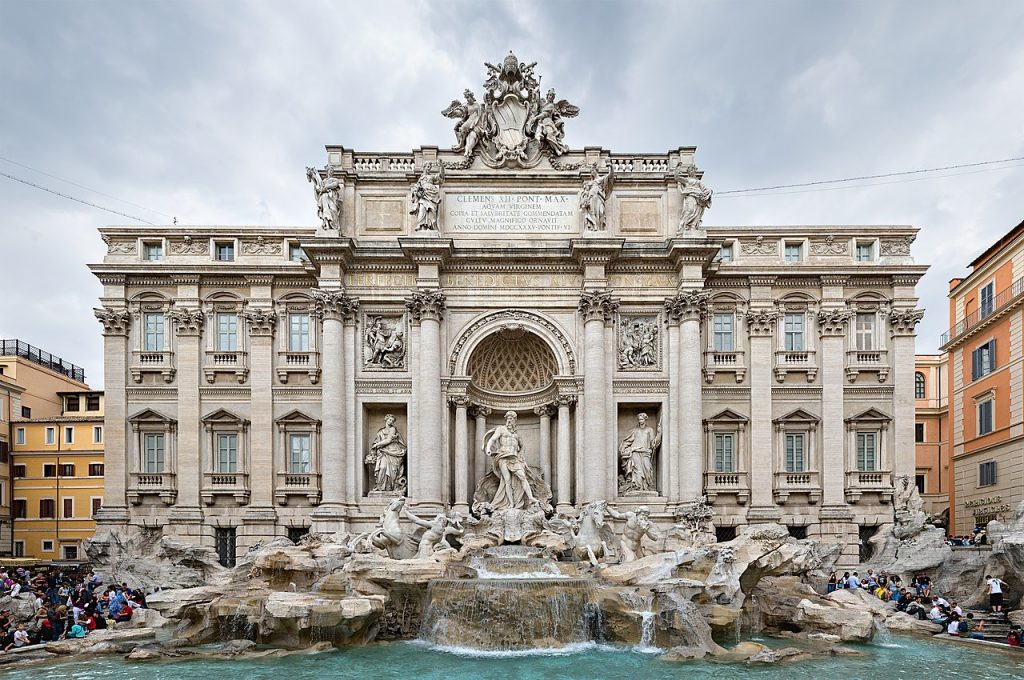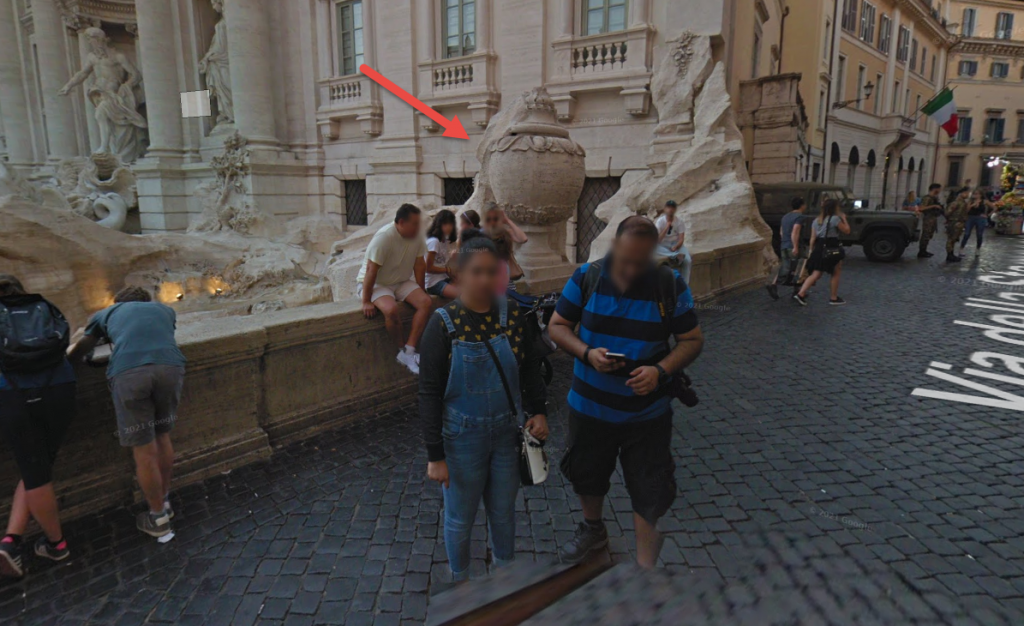Why You Shouldn’t Piss Off The Architect

The picture above is a photo of the Trevi Fountain in Rome, and it’s probably the world’s most famous fountain. According to Top Rated Online, it’s the second-most reviewed location on Google Maps — and that counts all locations, not just fountains. So yeah, it’s pretty famous. The image above does not do it justice, so please take a moment to check out this much bigger image via Wikipedia. You’ll see Oceanus, the Greek god of the sea, surrounded by merfolk, looking over gallons of flowing water. But you can’t quite see the thing below. It’s called the Ace of Cups, and it doesn’t really fit in with the rest of the sculpture’s design.
But that’s OK — it’s probably not there for aesthetic purposes. Most likely, the designer put it in out of spite.
Here’s a screenshot from Google Street View. It’s the urn-shaped thing behind the two tourists in the center with their faces blurred out. I tossed in a red arrow to make that clear.

The urn is not majestic and there’s no water flowing from it. In fact, it doesn’t really fit in with the overall motif or design of the sculpture at all. If anything, it gets in the way. The rest of that wall, as you can see, is rather low, allowing passersby an easy way to see the fountain or giving visitors a place to sit for a bit. The urn, which was later dubbed the Ace of Cups by the public (after the tarot and playing card it somewhat resembles), doesn’t really belong there. All it does it block the view of the fountain.
And that’s probably the point.
The Trevi Fountain was designed by an Italian architect named Nicola Salvi, who won a contest sponsored by Pope Clement XII. Work began on the project in 1732 and, as you can imagine, it took a long time — the fountain wasn’t done until 1762. And not everyone was happy with their homes and businesses being in a decades-long construction zone. And by most accounts, one particular business owner was vocally annoyed. As Travel and Leisure shares, “during the fountain’s construction, a local barber was constantly annoyed by the noise and debris. Day in and day out, he’d pester Salvi with his dismay.”
Salvi couldn’t do anything about it, of course; massive public works like this are loud, noisy, and anything but short. But the barber didn’t relent. So Salvi decided to take the opposite approach — instead of helping the barber, Salvi was going to get the last laugh. He added the Ace of Cups to his design for a single purpose: “so that the barber would never have a view of the masterpiece once it was completed,” per Travel and Leisure.
Salvi didn’t get to see his revenge, though; he died in 1751, well before the fountain was completed. The barbershop is no longer there.
Bonus fact: Lots of tourists throw coins into the Trevi Fountain — and a lot of coins at that. According to the BBC, an “estimated 3,000 euros ($4,000, £2,000) [ . . . ] splash daily into the Trevi are collected each night.” The money goes to a charity that operates a free supermarket for Rome’s poorest residents.
From the Archives: Spite Thy Neighbor: The story of a “spite house.”
